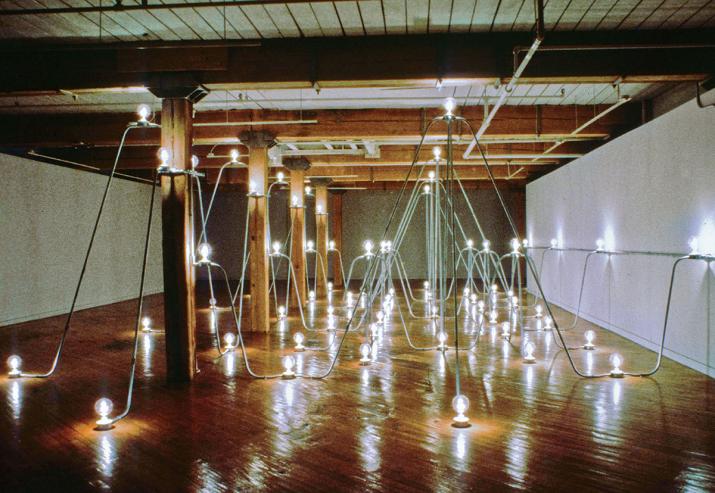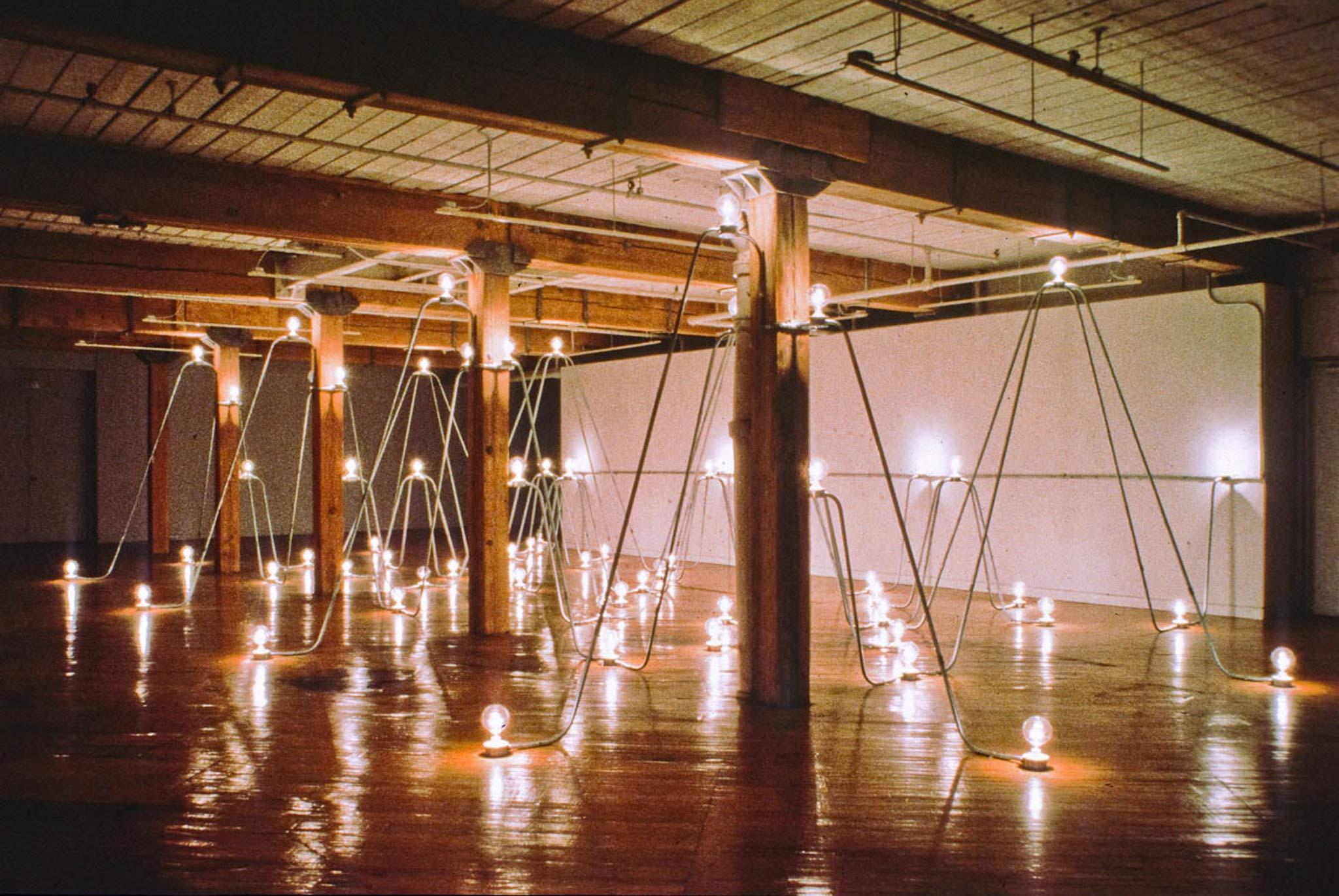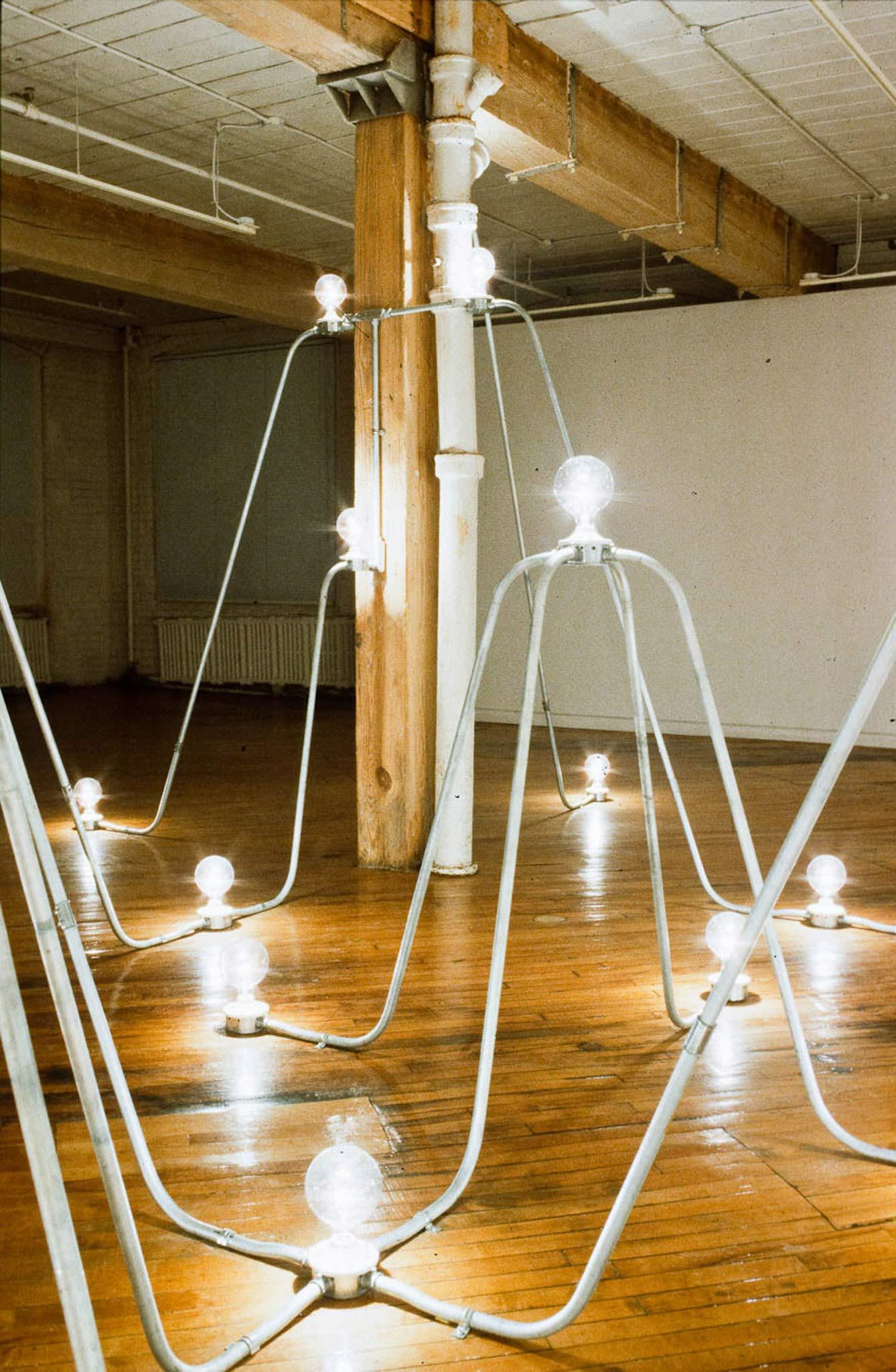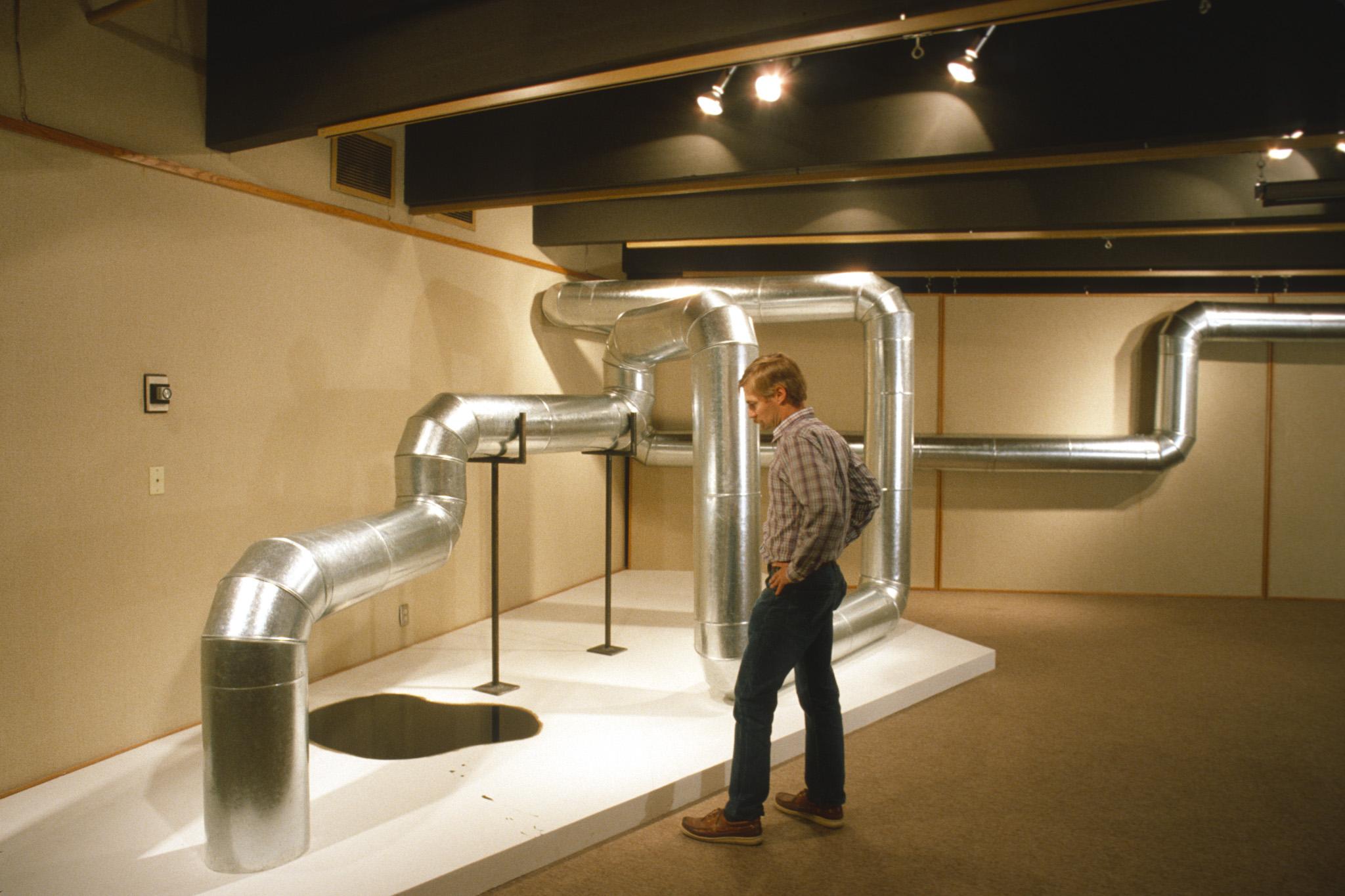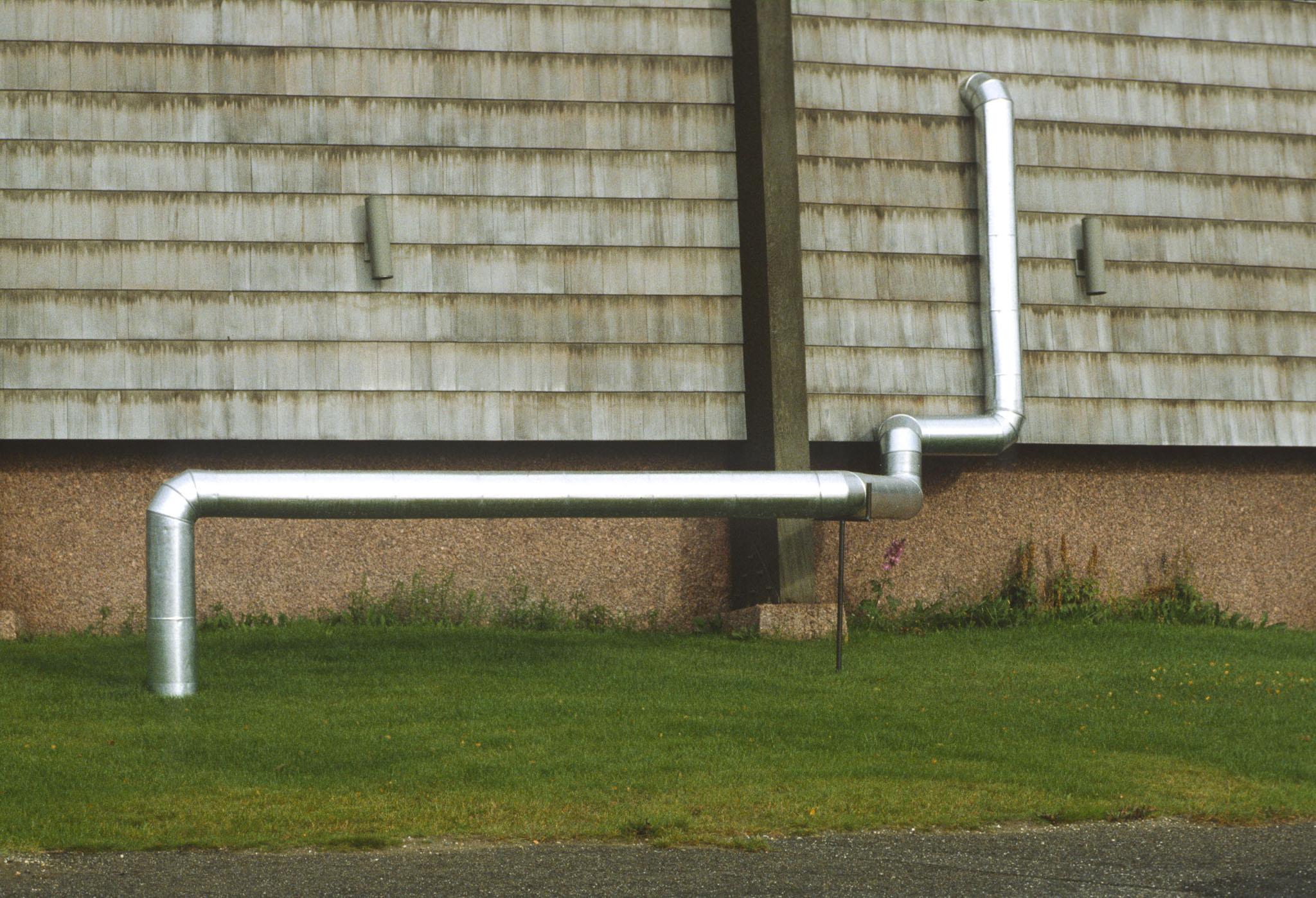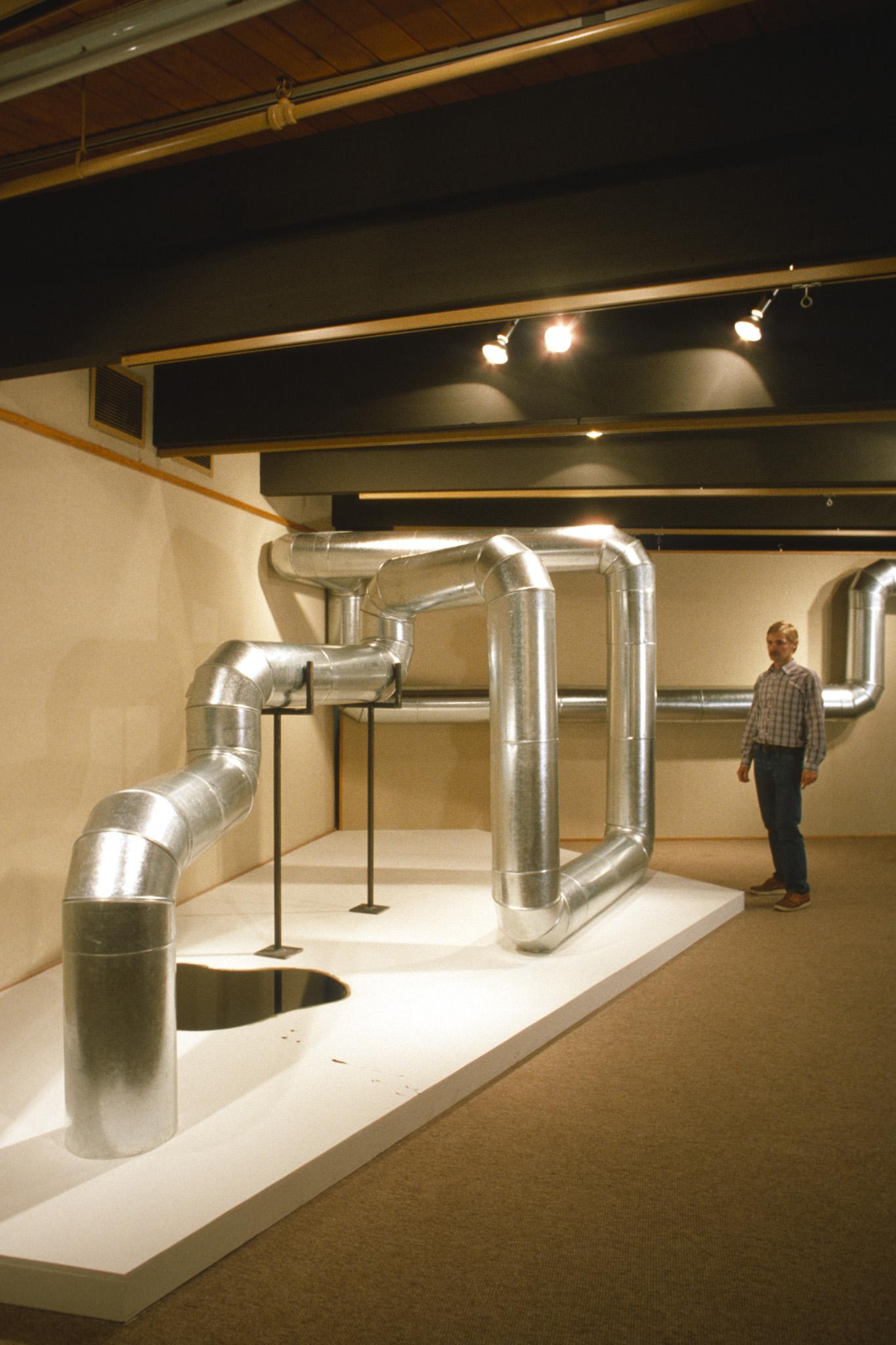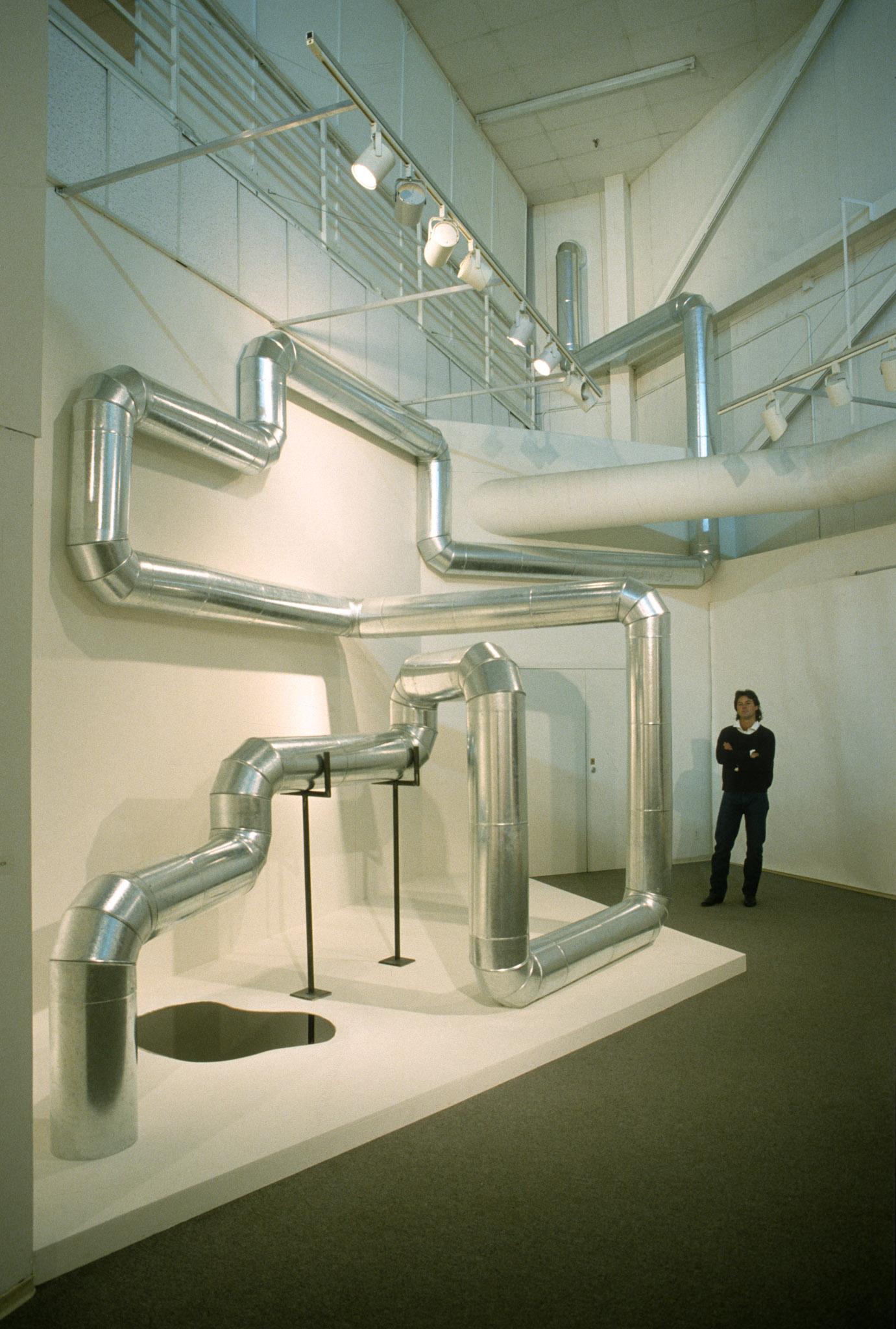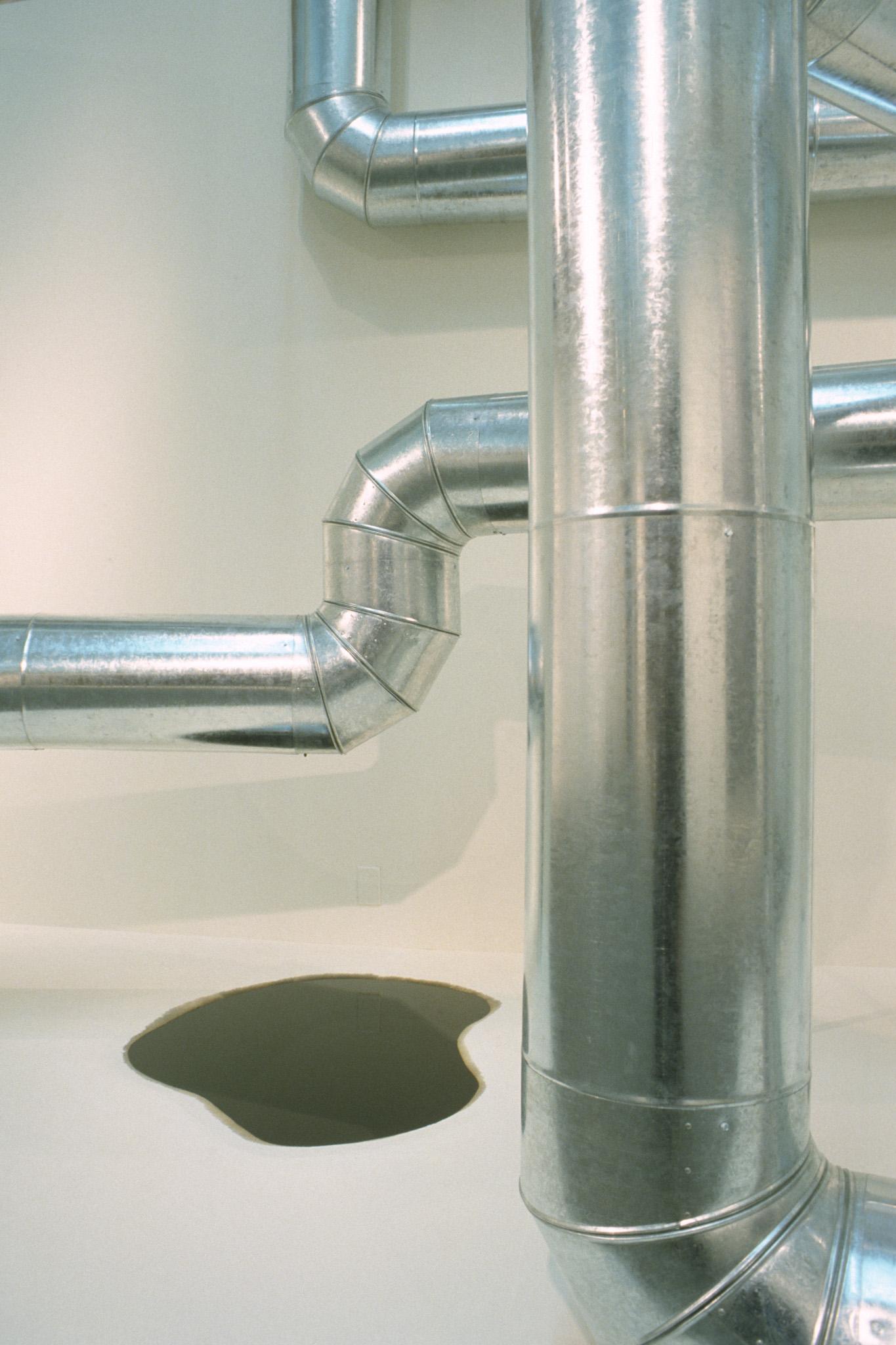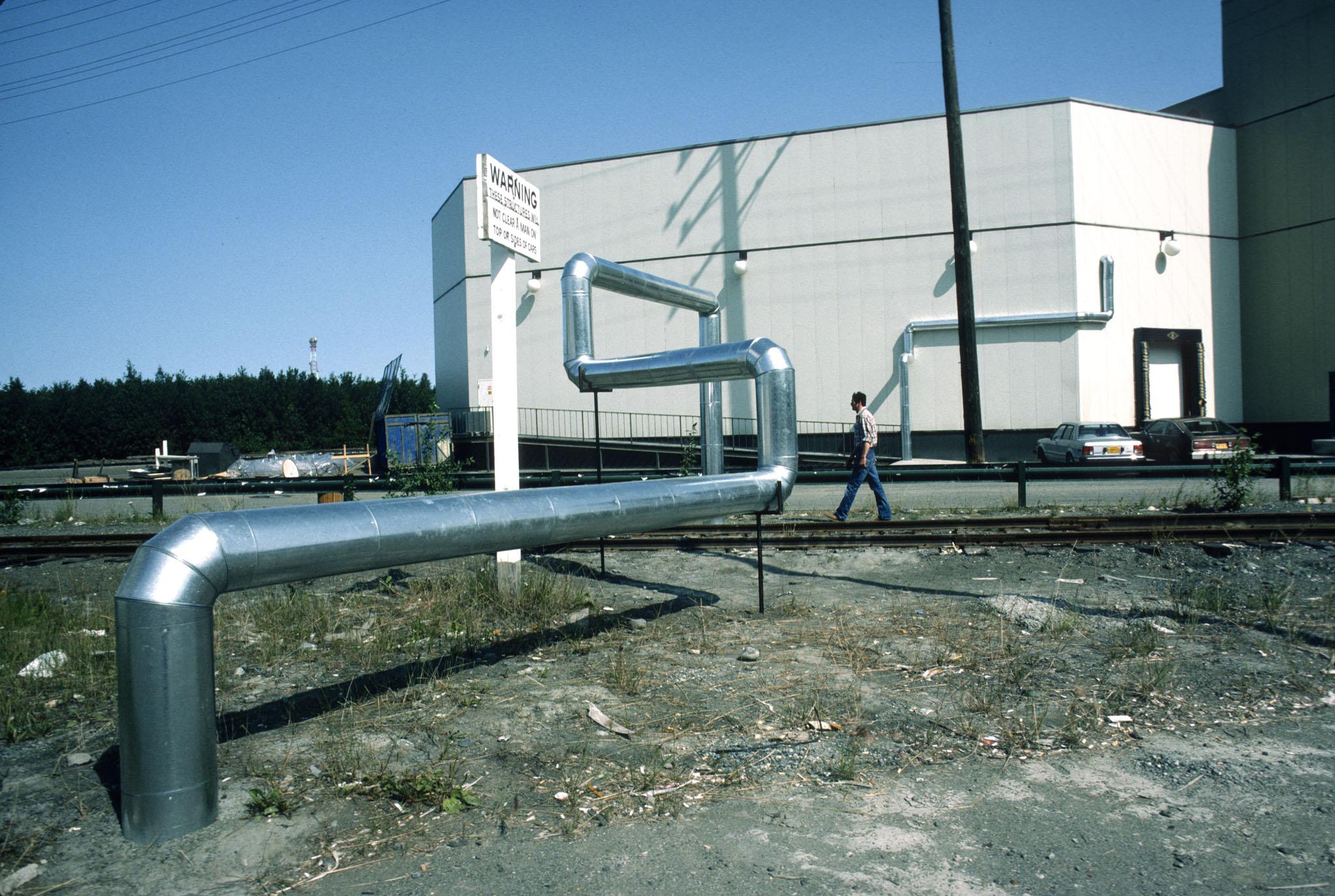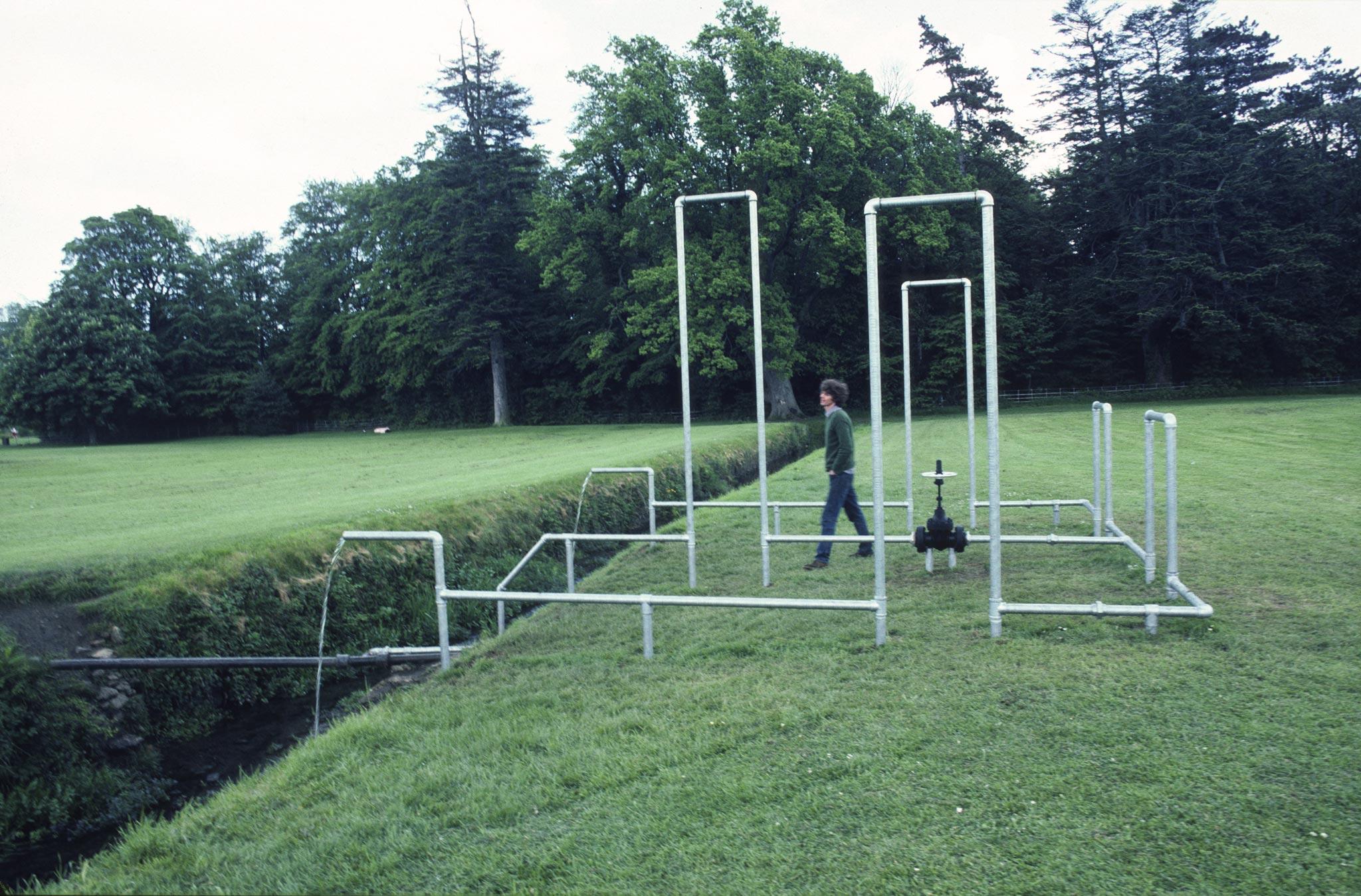Ventilation IV: Hampton Air is a sculpture of intersecting steel ventilation pipes, which exists both indoors and out. Emerging out of a large, central, floor-to-ceiling pipe in the middle of the gallery are a network of smaller pipes and ventilators. One of these pipes appears to penetrate the building wall, extending the work beyond the limits of the gallery space into the courtyard, where pipe branch out and multiply in the garden. (In Ventilation III: Finn Air, the pipe actually penetrates the wall, bringing the outside air into the museum.)
The pipes give form to the atmosphere, shaping the air into long intersecting columns. The ventilators spin, producing breezy currents, while also creating voids. Air rushes down the pipes filling the vacant spaces, air continuously cycling, circulating, and in and out – the sculpture, Guild Hall, East Hampton, breathing.
Along with being evocative of a technological system, I intend the work to be practical yet playful, functional yet not really necessary, a part of the architecture yet part of the outdoor environment as well.
Ventilation IV: Hampton Air is one of a series of works I began in 1982, which externalize basic technological systems. Made of the standard materials of each system – plumbing, electricity, drainage, heating, gas, and ventilation – the sculptures are functional; the electrical systems light, the heating systems heat, the drainage systems drain, the ventilation systems circulate the air, and so on.
Since the sculptures are exposed fragments of vast, hidden networks, they are part of open-ended systems, part of the world. Over the years these technological systems have become necessary for our everyday existence, yet they are usually hidden behind walls or beneath the earth and relegated to the realm of the unconscious. We have trouble owning up to our almost total dependence on them.
Reflecting on how our basic technological systems have interacted with nature reveals that in the name of technological improvement the environment has frequently been blindly and carelessly damaged. While continuing to meet our immediate material needs, the channeling of the energy and elements of the earth can be done intelligently with the long-term benefit of the planet in mind. In doing so we become nature’s agents rather than nature’s aggressors.
Technic in Greek means “art” or “artifice.” The land drainage systems of Crete and Babylon, the aqueducts of Rome are art in their own rights. Technology and art don’t exclude each other. By seeing the aesthetic aspects of our basic technologies and bringing art to bear on the construction of future systems, a new “technic”ology can develop.
